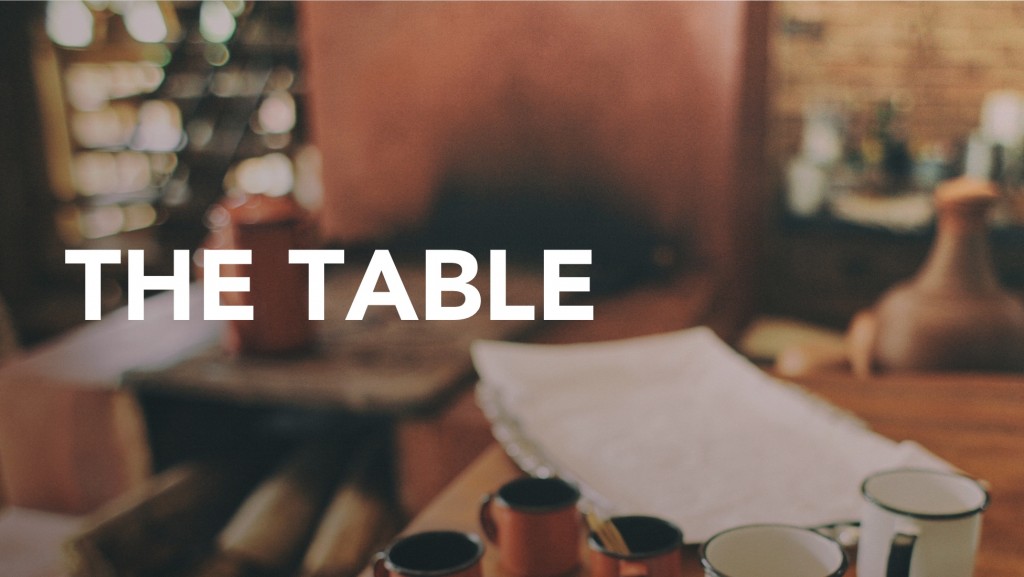We’ve been sharing lunch together as a community after the 11:00 service for a while now, and I love it.
It can be difficult to set work and preoccupations aside, but a table (and a meal on top of it) offers us an invitation to just sit around in beautiful inefficiency with no agenda other than togetherness. The table gives us an excuse to sit down, to slow down, to talk, to reflect. Around the table we leave behind the singular me and you and miraculously become the collective WE.
Gathering around a table over a meal feeds us in many ways. Several studies have shown the physical and psychological benefits of eating together. For example, children do better in school if they have regular family dinners, and eating alone becomes intensely isolating. But gathering together over the table is much more than merely beneficial—it is sacred.
Over the table, I’m knowing God better as I’m knowing people better. Over the table, I acknowledge God is among us and I experience God’s grace and peace and rest. I look around and see that this is good. Every time I share a meal with friends I remember the last thing Jesus did with his friends was share a meal. As Jesus passed bread and wine around the table at that last meal saying “This is my body, and this is my blood,” he was letting them know his very presence is revealed when they eat and drink together—and sharing a meal together was the way they continued to remember his death, to proclaim his resurrection, and to anticipate his return. When we invite people to take the sacrament of communion, we still say “Come to the table.” And this table equalizes us and unifies us, because as we share the bread and wine we share in the brand new life God gave us together.
We worship God in eating and drinking at the communion table, but I think we also worship God in eating and drinking at our kitchen tables and restaurant tables and cafeteria tables. Augustine of Hippo defined a sacrament as a “sign of sacred reality” and “a visible sign of invisible grace,” and in the words of John Wesley, a sacrament is “an outward sign of inward grace and a means by which we receive the same.” Isn’t that what the table is, what eating together around a table is like? We often talk about worship being food for our souls, and Jesus himself said he was the Bread of Life and the Living Water. So if worship is like food, shouldn’t food be a way of worship? “To eat is a necessity, but to eat intelligently is an art,” said the 17th-century writer François de La Rochefoucauld. Perhaps to eat “intelligently” means a mindfulness of where your food comes from and of who grew/harvested/made/sold it. But perhaps to eat “intelligently” means simply to eat together, to eat worshipfully.
If you follow me on Instagram, I realize I spam your feed with photos of coffee and food all the time, and this is (one reason) why I take so many photos of table-tops. Each photo represents things like the conversation I had with the man who picked and sold those strawberries to me, the time spent in the kitchen with my roommates chopping those vegetables, the moments of laughter we shared as we ate that dish together. My friends make fun of me: “Are you Instagramming this right now?” Yes, I am. #sorrynotsorry. Because it’s a sacred moment full of color and life and beauty, full of good friends and good conversation, and this is one way I intentionally acknowledge the sacredness of this fleeting moment around the table.

* A longer version of this post first appeared on my friend Jay’s blog as part of his series 30 Words in 30 Days. Read the original post and others from the series on Jay’s blog at jaykimthinks.com.
Interested in submitting a piece you’ve written or becoming a regular contributor to the Awakening Blog? Email Alicia McClintic at [email protected].